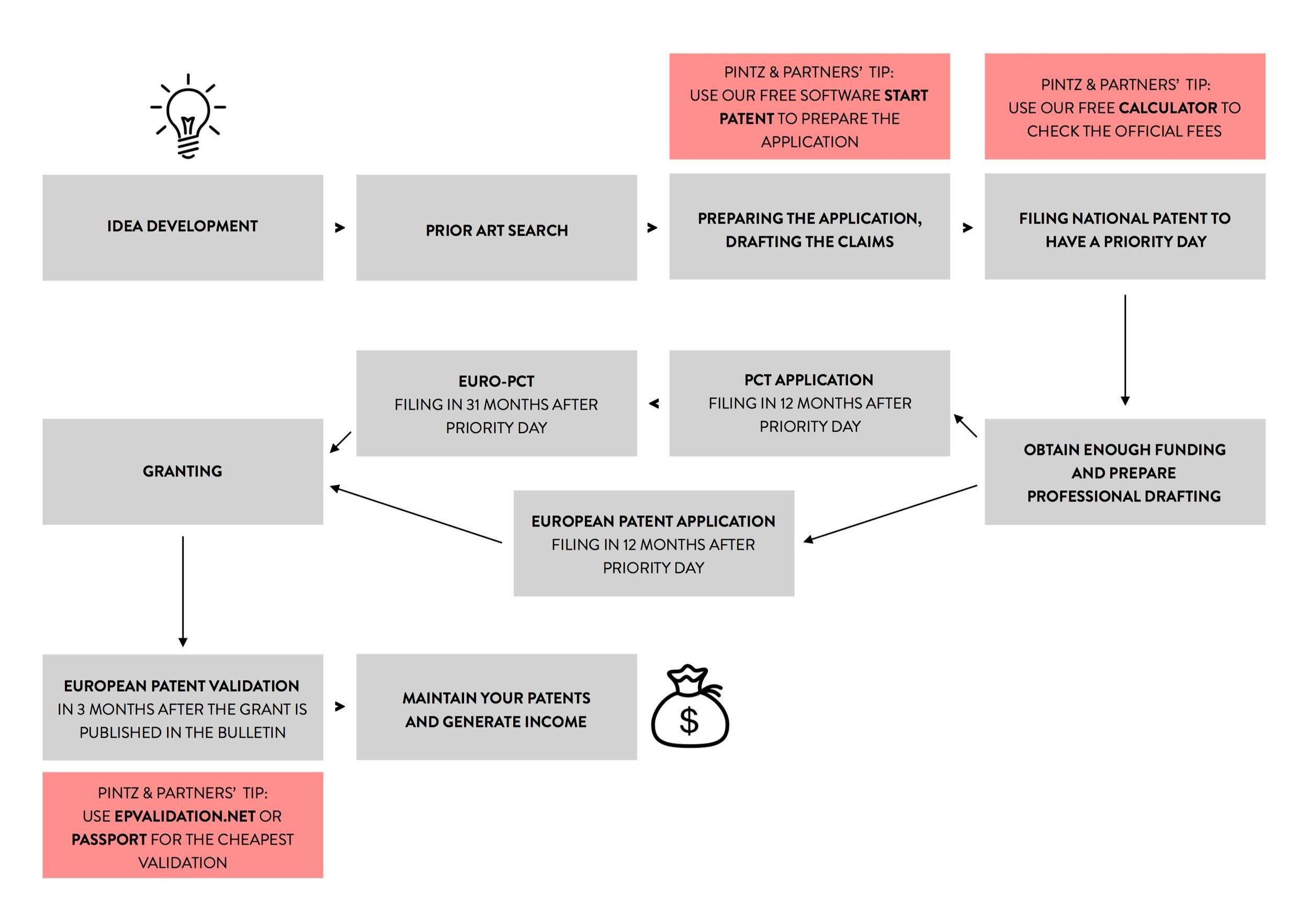Applying for a Patent
What is a patent? How to obtain a patent? And what are the costs of patent application?
What is a patent?
Patents protect technical inventions. An invention can be, for example, a product, a method or an apparatus. To be patentable, it must be worldwide new, industrially applicable and involve an inventive step. Patents are valid in individual countries, for a specified period, usually a maximum of 20 years. Patents give the right to prevent third parties from deriving economic gain from an invention for commercial purposes without the owner’s permission. However, a granted patent will not automatically mean commercial success. All it shows is that the patented invention is new, industrially applicable and inventive. These are namely the main requirements of an invention to be patentable.
Patenting can be an expensive business. As with any investment, the risks and benefits need to be weighed up carefully. However, patenting is advisable in any country where an invention can be expected to yield significant economic benefits.
How to get patent protection?
Patent protection is not automatic, you have to file an application describing the invention in technical terms and in a form that meets certain requirements. No technical information already in the public domain can be protected by a new patent. So if an invention has been displayed or sold, or its technical details published, its inventor may not later get patent protection. Therefore, any discussions with technical partners, developers or investors prior to patent filing should take place in strict confidence. Because of the novelty requirement, it is advisable to carry out a prior art search before patent application.
When you already have a drafted patent application, the first step is usually to file your application to a national patent office, to the European Patent Office or to file a PCT application. With the filing, the long process to obtain a granted patent starts, and usually lasts for about 2-3 years. During this application process, the patent offices examine if your invention is patentable.
PREPARING A PATENT APPLICATION
A patent application consists of the following documents:
Description of the invention
The description must describe the invention clearly and completely enough for a person skilled in the art to be able to carry it out. The description forms the basis for the claims.
Claims
The claims must define the subject-matter for which patent protection is sought in terms of its technical features. They must be clear and concise and be supported by the description.
The claims define, in technical terms, the extent of the protection sought in a patent application. In other words, the purpose of the claims is to define which subject-matter is protected by the patent. As you can see, claims are the most important part of the whole patent application and should be drafted very carefully. Also, do not forget that after filing, the subject-matter of an application cannot be extended beyond the content of the application as filed. Therefore, before applying for a patent it is highly recommended to seek legal advice from a patent attorney. Because otherwise, if you draft the claims yourself, and ask a patent attorney during the examination phase to help you amend the claims, he might not be able to save your patent application.
Drawings
The application may also contain drawings. These form a useful addition to the description when they illustrate the features of the invention.
Abstract
The abstract is purely for technical information and is not used to assess the patentability of the invention.
Request for grant
The request usually involves an indication that a patent is sought, identification of the applicant and a description or a reference to a previously filed application, if applicable.
“The value of a patent often
depends as much on how it is drafted as on the invention itself.”
WHERE TO FILE YOUR PATENT APPLICATION?
There are many different routes to patent protection. The best route for you will depend on your invention and the markets your company operates in.
As an example, if you wish to use your invention in at least four European countries, it makes sense to file a European patent application rather than national applications. Do you need time to sell your idea to investors, or to figure out, if your invention is worth patenting? In this case the PCT application will be your perfect choice. Should you only need right in Hungary, why would you maintain a European patent in 38 countries?
Find out more:


